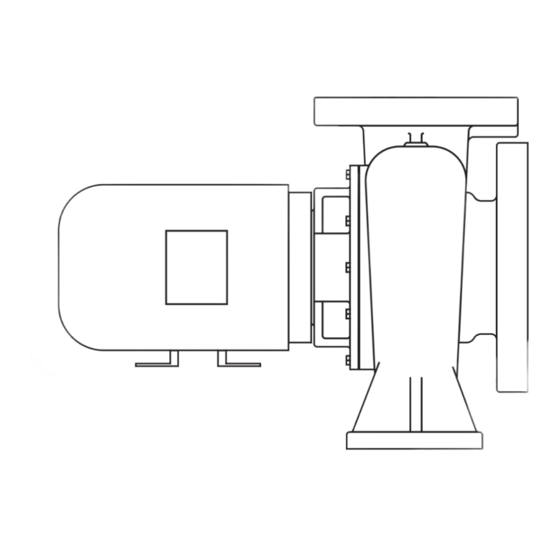
Summarization of Contents
General Information
Safety
Explains safety designations, general guidelines, personnel qualifications, and specific safety actions.
Electrical Safety
Covers electrical hazards like sudden start-up, shock, and overload protection.
High Temperature Safety
Addresses hazards related to hot surfaces and spraying water.
High Pressure Safety
Details risks associated with exceeding maximum working pressure and thermal expansion.
Transport and Storage
Transport and Handling Requirements
Guidelines for safe transport and handling to prevent damage during transit.
Uncrating and Lifting
Procedures for safely removing the pump from its crate and lifting it.
Receipt, Inspection, and Damage Reporting
Steps for checking received pumps for shortages or damages and reporting them.
Product Description
Unpacking
Instructions for safely unpacking the pump unit and its components.
Storage
Guidelines for short-term and long-term storage of the pump unit.
Configuration
Details the available pump models and optional features.
NSF Certifications Available
Information on NSF certifications for pumps, including specific requirements.
Pump Installation
Pump Location
Recommendations for the optimal placement of the pump unit for accessibility and performance.
Foundation
Requirements for creating a stable and rigid foundation for the pump unit.
Setting the Pump
Procedures for placing the pump unit on the foundation and initial checks.
Leveling The Pump
Techniques for accurately leveling the pump unit using spirit levels.
Piping and Connections
Guidelines for anchoring, supporting, and aligning piping to the pump.
Suction Piping
Recommendations for short, direct suction piping to minimize head loss.
Reducers
Proper installation of eccentric and straight taper reducers on suction nozzles.
Discharge Piping
Recommendations for short, direct discharge piping to reduce friction loss.
Valves
Importance of discharge and foot valves for priming and control.
Flooded Suction
Specific requirements for flooded suction installations and gate valve placement.
Expansion Joints
Use of expansion joints to prevent piping strain and transmit forces.
Strainers and Screens
Importance of strainers and screens for preventing pump clogging.
Alignment
General Alignment
Importance of checking and maintaining alignment after installation and grouting.
Initial Alignment of Flexible Coupling
Procedures for aligning the pump and driver shafts using flexible couplings.
For Fine Alignment, 3500 RPM Operation, For All Other Coupler Types
Using dial indicators for precise alignment with specific tolerances.
Pipe Alignment
Ensuring proper piping alignment before connection to avoid strain.
Pump Operation
Lubrication
Recommendations for bearing lubrication frequency and type.
Rotation
How to check motor rotation direction before connecting the coupling.
Guarding
Ensuring all guards are in place and secure before start-up.
Priming and Filling
Steps to ensure the pump is completely filled with liquid before starting.
Foot Valve Priming
Using a foot valve for priming on suction lift applications.
Vacuum Priming
Methods for removing air using vacuum equipment.
Inductor Priming
Method of priming using a priming inductor and high-pressure liquid.
Shaft Sealing Settings and Adjustments
Mechanical Seals
Information on the construction, function, and maintenance of mechanical seals.
Start-up, Operation, and Shutdown
Valve Setting at Start-up
Proper setting of discharge and suction valves during pump start-up.
Pump Maintenance and Service
Operation
Key points to ensure before starting the pump.
Starting Up
Step-by-step procedure for safely starting the pump.
Shut Down
Recommended sequence for safely stopping the pump.
Mechanical Seal Maintenance
Procedures for maintaining mechanical seals, including break-in period.
Recommended Spare Part List
List of essential spare parts to keep on hand for maintenance.
Fastener Torque and Sequence
Importance of correct fastener torque values for assembly and maintenance.
Repairs
Complete Pump Disassembly - Model 1620/1650
Detailed steps for completely disassembling the pump models.
Inspection of Components
Guidance on inspecting disassembled pump components for wear or damage.
Reassembly Procedures
Steps for reassembling the power frame, mechanical seal, and complete pump.
Troubleshooting Guide
Insufficient Pressure or Flow
Identifies causes and remedies for low or no pressure and flow.
Excessive Power Consumption
Lists potential causes and solutions for high power usage.
Abnormal Noise and Vibration
Troubleshoots causes of unusual noise and vibration issues.
Motor Fails to Start
Addresses common issues when the motor does not start.
Motor Runs Hot
Diagnoses and resolves problems related to an overheating motor.
Assembly Exploded View
Model 1650 Close Coupled Configuration
Exploded view showing components of the Model 1650 close coupled pump.
Model 1620 Frame Mounted Configuration
Exploded view showing components of the Model 1620 frame mounted pump.











Need help?
Do you have a question about the 1620 and is the answer not in the manual?
Questions and answers